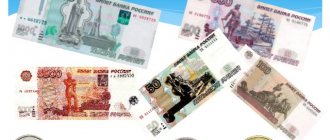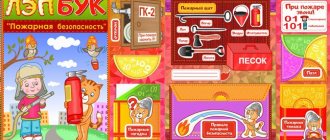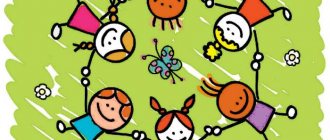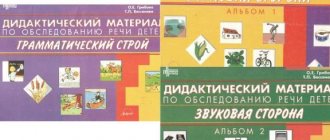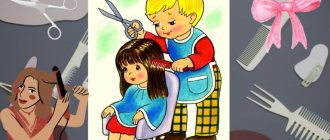Every parent wants to see their child happy and successful in the future. But are we doing everything for this? After all, our children will have to live in a world where possession of the necessary information decides almost everything. Do they know enough about the world of finance? Do they know how to properly handle and protect money?
This article is dedicated to the topic of financial literacy for children. In it you will learn how to properly introduce preschoolers and schoolchildren to the world of finance, what economic concepts a child should know, and also receive a lot of useful materials on financial education and awareness.
Content:
- What is financial literacy?
- Financial education of children What is the importance?
- What should a child know?
- Financial and economic games
- 10 Best Financial Literacy Books for Kids of All Ages
MAGAZINE Preschooler.RF
Financial education in a kindergarten.E. A. Solovyova, senior teacher of the Children's Educational Institution "Rosinka" Kindergarten, Yadrina
Today's children begin to acquire primary experience of orientation in elementary economic phenomena already from preschool age. In everyday life, the baby is faced with certain financial and economic phenomena. The rapidly changing infrastructure of modern life dictates the need for economic education of the population from preschool age. In order to develop a correct and competent economic understanding in children, the teaching staff of our kindergarten decided to study financial literacy with pupils of senior preschool age.
During the testing of financial education at older ages, the key task was to increase the economic competence of preschoolers.
The economic education of preschoolers was carried out on the basis of a preschool institution during an experiment.
The object of study of the experimental site was the educational process, play and creative activities, and leisure activities of children in kindergarten.
The purpose of the experiment is to identify and improve the economic understanding of preschool children, developing in pupils the skills, abilities and competencies for making competent financial decisions in everyday life and in the process of interaction with financial organizations.
Objectives of the experiment
- form initial ideas about the basics of financial and economic categories;
- to form the right attitude towards money, ideas about how to earn it and use it wisely;
- to form elementary ideas about a product, as a product and the result of human activity, its cost, value;
- develop the ability to understand your needs within reasonable limits, be able to identify major and minor costs;
- to cultivate the moral qualities of the individual: hard work, responsibility, honesty, frugality, thrift, etc.
- cultivate a respectful attitude towards the work of adults as the main product of the economic environment.
A team of teachers, a creative group, worked on the experiment and, during meetings, seminars and consultations, determined the course for implementing the experiment. The implementation of the experiment began with the preparation of methodological and program documentation and the creation of a subject-specific development environment.
The creative group of teachers clearly defined the essence of economic education for preschoolers, which consisted not in organizing special education in economics, which would require additional time and could lead to overload of children, but in enriching and concentrating various types of children's activities with economic content. Direct educational activities - in mathematics, ecology, artistic creativity and familiarization with the social and subject world - were also integrated and enriched with economic content.
The creation of a subject-based development environment involved replenishing the development environment with board and printed games “Monopoly” , “Money” , “Cheerful Businessman” , “Business Life” , “Manager” , “Supermarket” ; didactic games “What is money” , “Income of the Cheburashka family” , “Tasks” , “Storing money” , “Vehicles” , “Rebuses” , “Advertising for the Mishka store” , paraphernalia for role-playing games “Shop” , “ Post Office , Supermarket , Hairdressing Salon , Sberbank . The parents of the students even made a model of an ATM with the function of printing checks, which stimulated the children's interest in studying financial transactions.
Saturating the lives of preschoolers with basic economic information, situations and manuals contributed to their development of real economic thinking, which made this process more conscious and dynamic.
The approximate content of mastering financial literacy was reflected in 5 main topics:
- “My family” (family economy)
- "World of Money" (money, price)
- “My City” (production of useful goods)
- “The World of Goods” (basics of marketing)
- "My Country" (resources)
As part of mastering the content of economic education in kindergarten, cycles of entertaining lessons were held: “Children and money” , “What are savings” , “Mandatory payments” , “Essential goods” , “Consumer basket” , “What is tax” , “My favorite advertising" .
In addition to the professions well known to them, the kids also became acquainted with the concepts and professions of advertising agent, advertiser, banker, manager, tax inspector.
For kindergarten students, together with their parents, excursions were organized to a bank, a post office, a shopping center, and a sewing workshop, under the hashtag . ”
Readings, discussions and dramatizations of fairy tales with economic content were used to accumulate practical experience and form economic and financial understanding in various relationships and everyday situations of children. Folk tales, which collected the centuries-old socio-economic experience of the people, were used to cultivate such personality qualities as hard work, accuracy, thriftiness, thrift, prudence, practicality and others.
Teachers and children read, analyzed and dramatized folk and original fairy tales with economic content: “The Fox, the Hare and the Rooster” , “Teremok” , “Kolobok” , “The Man and the Bear” , “How Misha turned from a buyer into a seller”, “Little businessman” , “Economics for kids or how Misha became a businessman” , “Buy onions” , “How the bear wanted to open a store” , etc.
In the course of economic education, acquaintance and memorization of proverbs and sayings about work, about money, about buying and selling, about wealth and poverty, about frugality, about goodness, was intensified. For example: “When you finish a job, go for a walk boldly , “Labor feeds, but laziness spoils.” " and others.
Preschoolers also had conversations: “Acquaintance with the Russian national currency” “How trade was exchanged in the old days”, “What is advertising”, “ Where and who do your parents work for” , “Why do people need money” , “Family budget” , “Who am I?” I want to be" .
It is known that the leading activity of pupils is play, therefore role-playing, didactic, developmental and advertising games were used to master economic knowledge.
Role-playing games helped make economics understandable. Thus, by playing in professions, children comprehended the meaning of labor, reproducing the labor processes of adults and at the same time “learning” about economics. In role-playing games, real life situations were simulated: purchase and sale operations, production and sales of finished products, etc.
The teachers conducted games - classes on the topics “Family budget: “Income - expenses” “Travel to the country of goods” , “Products and caring for them” , didactic games “Family budget” , “Who does what?” , “Name your profession , “What are the types of income?” , "Routes of goods" . During the games, children's ideas about the world of economic phenomena were clarified and consolidated, and new elementary economic concepts were acquired.
The children really loved the ad games. They learned with interest to advertise the best products, emphasizing their attractive appearance, versatility, and advantageous qualities. During art classes, children learned to draw and design advertising signs.
In classes on the formation of elementary mathematical concepts, preschoolers learned to solve logical and arithmetic problems, joke problems that combine elements of a problem and entertainment, cause mental tension and bring joy, develop imagination and logical reasoning, and also have an economic idea.
For example, the tasks of the wise Owl:
- Which fruits are cheaper and which are more expensive in Russia: apples or pineapples? In Africa? Why?
- Which apples are more expensive on the market: fresh or slightly beaten or rotten? And why?
- In the village of Prostokvashino, everyone loves ice cream. But how do you figure out when there is more demand for it: in winter or summer?
Teachers actively created discussion situations on the topics: “What types of products are there?” , “Where is the product sold?” , “Where does the product come from?” , “Where and by whom is the product produced?” .
“Financial Literacy” competitions for preschoolers. During the experiment, a mini-project “My Piggy Bank” , within the framework of which parents and children, in the course of joint applied creativity, made piggy banks. The kids collected coins in piggy banks and thereby learned how to accumulate savings to fulfill their desires.
Thus, during the experiment, children developed an interest in the economic sphere of life of the family and society, the level of formed economic ideas increased, children skillfully incorporate economic knowledge and terms into independent games, preschoolers have an understanding of primary and secondary needs.
We also note that the position of parents in the financial education of preschoolers has changed; they now have an understanding of the relevance and significance of this area of working with children from an early age. Parents grew interested in economic competitions, events and projects held in the group, and they began to actively participate in the life of the group.
Experimental work has shown that the process of preschoolers mastering the basics of financial literacy is successful; older preschoolers are able to master basic economic concepts in an adequately organized educational environment of a kindergarten.
| Next > |
What is financial literacy?
Financial literacy is the knowledge, skills and abilities that a person needs to make smart financial decisions, as well as to achieve financial well-being.
A financially literate person is a person who:
- knows how to competently handle funds, preserve and increase them;
- keeps records of income and expenses;
- navigates the economic situation of the country;
- can recognize signs of financial fraud;
- fulfills its obligations as a taxpayer;
- knows how to navigate banking services.
For a long time, it was believed that financial literacy was necessary only for employees of financial institutions. But a 2017 survey by the National Financial Research Agency found that people are increasingly complaining about a lack of economic and financial knowledge that would help them, for example, avoid taking part in dubious financial transactions. And only 12% of respondents believe that they have a sufficient level of financial awareness.
Therefore, our country is now actively pursuing a policy to increase financial literacy among the adult population and the younger generation. Special literature is published for children, and economic games and applications are created. Information sites and online courses on personal finance management are intended for adults.
Financial education of children
What's the importance?
The world of finance seems far from a child only at first glance. In fact, children are included in the economic life of the family very early. When they go to the store with their parents, watch advertisements on TV, they receive an envelope with money as a gift from their grandparents.
Therefore, it is important to introduce children to financial and economic relations as early as possible, starting from 5-6 years old. By this time, they begin to develop logical thinking and increase interest in the adult world.
Financial literacy is developed as a child grows up and goes through various life stages: the first independent trip to the store, paying for travel, receiving pocket money, etc.
What should a child know?
Now let's talk about what children should know about the world of money and finance. All information can be divided into 5 large groups.
The first group is knowledge about money:
- what kind of money is there?
- how you can use money;
- how to count money correctly;
- spending money wisely;
- how to learn to save money;
- ways to protect funds.
The second group is knowledge about needs:
- what are the needs;
- desires and capabilities of a person.
The third group is knowledge about the product:
- familiarization with the concepts of “price”, “purchase”, “sale”;
- what determines the price of a product;
- how to determine the quality of a product.
The fourth group is knowledge about work:
- what kind of work there is, getting acquainted with professions;
- how to determine the product of labor;
- remuneration, familiarization with the concept of “wages”;
Fifth group – knowledge about the budget:
- what is a budget, what does it consist of;
- family expenses and income;
- what sources of income may be;
- ways to save your budget.
This information will help the child become familiar with and navigate basic economic concepts.
Municipal state preschool educational institution kindergarten No. 44 “Nest”
Creative project:
“Formation of the foundations of financial literacy
in older preschoolers"
Author of the project:
teacher of the highest qualification category
Tagirova E. A.
| Project passport Project object | Harmonious development of older preschoolers, preparation of preschoolers for socio-economic relations |
| Object subject | Financial literacy |
| Project type: | Short-term, group, creative |
| Project participants | Pupils of the preparatory group for school (6 – 7 years old), teacher, parents |
| Implementation deadlines: | September 2022 – December 2022 |
| Problem: | To help preschool children form ideas about economic concepts: economics, needs, standards of living, money, goods, price in accordance with their age characteristics. |
| Relevance | In modern conditions, children early become involved in the economic life of the family, encountering money, advertising, going shopping with their parents, participating in the process of buying and selling goods, thereby mastering economic information at the everyday level, most often in a distorted form. It is wrong to rely on the spontaneous assimilation of the economic side of life, since in the process of learning children are faced with such ethical concepts as wealth, money, loans, debts, poverty and more. These concepts contain a great moral meaning, which reflects social values: honesty, kindness, hard work, mutual assistance and much more. The content of the project, in accordance with the Federal State Educational Standard for Education, ensures the development of the personality, motivation and abilities of children in various types of activities and covers the following structural units, representing certain areas of development and education of children: socio-communicative development; cognitive development; speech development; artistic and aesthetic development. This determines the relevance of this project for children of senior preschool age. |
| Hypothesis | Financial education and economic education are a relatively new direction in preschool pedagogy. Numerous studies in recent years indicate the need to introduce economic education from preschool age, when children receive primary experience of participating in elementary economic relations and are introduced to the world of economic reality. |
| Target | Development and testing of methodological techniques for developing financial literacy in children of senior preschool age, creating the necessary motivation to improve their financial literacy. |
| Tasks | Practical task: developing children's interest in knowledge about financial literacy, forming a system of knowledge about socio-economic relations in society; Educational objectives: to familiarize with the essence of the main financial and economic categories. Developmental tasks: to develop children’s cognitive interest in issues of financial literacy and the application of this knowledge in practice, to develop the ability to develop a game, coordinating their own game plans with the plans of their peers; develop speech, attention, mental operations, cultivate curiosity in the process of cognitive and play activities. Educational tasks: fostering a reasonable approach to one’s desires, comparing them with the possibilities of the family’s budget, promoting the development of moral qualities. Education of social and personal qualities and value guidelines necessary for rational behavior in the economic sphere. |
| Principles project implementation |
|
| Implementation stages project | Preparatory 1. Introduction to the topic of the project 2. Study of teaching materials, materials on the Internet; 3Identification of the problem; goals, objectives of the project; 4. Selection of methodological material on this topic; 5. Creation of a developing environment for work; 6. Set up children and their parents to work together, create a positive emotional background. Basic 1. Communication activities 2. Perception of fiction 3. Cognitive, research and productive activities 4. Artistic and aesthetic activities 5. Playful and educational activities 6. Labor activity 7. Working with parents Final Summing up, diagnosing the level of financial literacy of children, studying parents’ opinions on the effectiveness of the project. Registration of project results in the form of methodological materials. Presentation of the project results among the team of preschool teachers. |
| Terms of sale | The project is being implemented: in the course of joint activities of the teacher, parents, and students. Forms of project implementation: observation, role-playing games, didactic games, conversation, reading fiction, productive activities, board and printed games, presentations. Methods and techniques for project implementation:
|
| Products of project activities | Intellectual and educational games “I want - I need” or “Wants and needs”, “Learning to save”, “Income - Expense”; Role-playing game "Supermarket"; Collective work “Money’s Journey”; Joint exhibition of children and parents: “Financial Fair”; Methodical manuals: “Where does the money go?”, “Where is the money stored?”, “Money of the world.” |
| Expected results | For children: — acquisition of new knowledge of a socio-economic nature, — acquisition of primary skills for rational distribution of family income — mastering the following questions: how money is saved, how to learn to make the right financial decisions; — gaining skills in responsible attitude towards financial obligations; - development of attention and imagination, the ability to search and find new solutions, new approaches to considering the proposed situation; — application of practical advice in solving specific situations; - development of thinking through the ability to analyze, compare, synthesize, generalize, highlight the main thing, prove, refute; — development of cooperation skills with adults and peers; — development of independence and personal responsibility for one’s actions; - increasing interest in studying the world around us. For parents: Participation of parents in joint productive activities. Improving the pedagogical culture of parents in the problem of interaction with children on financial issues. For the teacher: Advanced training in the formation and development of financial literacy among preschoolers. |
Project content
Project implementation stages:
Preparatory
- Drawing up a step-by-step project work plan;
- Selection of fiction for children on a chosen topic.
2.Studying methodological, reference, encyclopedic and fiction literature on the selected project topic;
3.Selection of the necessary equipment and aids for the practical enrichment of the project, focus, systematization of the educational process of an economic orientation;
4.Informing parents about planning work with children on the project;
Basic
1. Conversations, stories and fairy tales, creating game situations on the topics: “What is economics?”, “What do we know about economics?”, “What do we want to know?”, “How will we find out?”
2. Excursions to the store, museum, library, post office, and ATM.
3. Story-based role-playing games “Bank”, “Cafe”, “Supermarket”
4. Games that simulate life situations: purchase and sale operations, production and marketing of finished products.
5. Fairy tales of economic content in classes and in play activities.
6. Economic fairs, auctions, entertainment.
7. GCD “What do we know about money.”
8. GCD “The House Where Money Lives”
9. Watching cartoons: S. Mikhalkov “How an Old Man Sold a Cow”, “Barboskins and Advertising”, “The Business of Gena the Crocodile”, “Prostokvashino. Treasure"
10. GCD “Journey of Money”
11. D\i “What will they buy faster?
12. Viewing presentations: “Visiting fairy tales”, “Money of the world”, “The story of Ruble and his friends”, “Tsvetik - seven-colored”.
13. Drawing: “Family budget”, “Where does the money go?”
14. Proverbs and sayings on the topic: “Economic education of preschool children;
15. Application on the theme: “Friends of the Gnome Economy”;
16. Manual labor: production of goods - ice cream and its advertising.
Final
Summing up the results of the project in the form of a role-playing game “Supermarket”
Hold a “Financial Fair” together with parents
Working with parents
- Informing parents about the tasks and content of economic education of children in kindergarten and family.
- Consultations, recommendations, reminders for parents.
- Questioning parents on financial literacy in preschool children.
- Making crafts for the Financial Fair.
- Participation of parents in the work on economic education of children in preschool institutions (economic fairs, holidays, competitions).
Work results:
- The level of children's knowledge and understanding of financial literacy has increased significantly.
- Broadcast of the photo report on the preschool educational institution website.
- The interest of children in the topic of the project, the manifestation of their cognitive activity.
- Parents' competence in matters of financial literacy has increased.
- Creation of teaching materials on this topic.
Bibliography
1. Amend A.F., Salamatov A.A. Formation of moral ideas of preschoolers in the process of economic education // Kindergarten from A to Z. 2003. No. 4. p.55.
2. Anoshina L.M. Economic education of older preschoolers in the process of familiarization with new professions // Kindergarten from A to Z. 2003. No. 4. p.103.
3. Belokashina S.V. Economy and children. Proverbs and sayings // Preschool pedagogy. 2009. No. 7. p.8.
4. For preschoolers about economics: a guide for teachers of institutions providing preschool education / E.N. Tabih. – Minsk: Vysh. school, 2007. – 48 p.: ill.
5. Playing economics: comprehensive classes, role-playing games and didactic games / author - comp. L.G. Kireeva. – Volgograd: Teacher, 2008. – 169 p.
6. Vasin D.V. Money and business for children. – Moscow: Eksmo, 2022. – 128 p.: ill.
7. Lushnikova E.V. How we play economics //Teacher of the preschool educational institution “TC SPHERE” M.; 2008. No. 11. p.75.
8. Smolentseva A.A. Introduction to the world of economics, or How we play economics: Educational and methodological manual, - St. Petersburg: “Childhood - Press”, 2001. – 176 p.
9. Smolentseva A.A. We introduce a preschooler to the basics of economics with the help of fairy tales. M.: ARKTI, 2006. – 88 p.
10. Smolentseva A.A. Problem-based game technology for economic education of preschoolers // Kindergarten from A to Z. 2003. No. 4. p.63.
11. Yagunova N.M. Introducing preschoolers to economics in creative activities // Kindergarten from A to Z. 2003. No. 4. p.128.
Let's play "Supermarket"
Learning to count money
View financial literacy presentations
NOOD for FEMP: “Introduction to coins and bills”
Financial literacy game: “Learning to save”
Financial literacy game: “Income – Expense”
Financial literacy game: “I want - I need” or “Wants and needs”
Work with
parents
Learning about ATM
Downloads: 3 times
Introducing preschoolers to the world of finance
Psychologists advise starting a conversation about finances when a child becomes interested in it. Usually this is the age of 5-6 years. Children's questions must be answered at a level accessible to the child.
- Teach your child about the basic needs of the family
The son or daughter must come to the understanding that not all desires can be satisfied and that the money earned by the parents is spent on certain needs.
- When planning a store visit, make a shopping list with your child
If he doesn't know how to write yet, let him draw pictures. In the store, stick to this list and ask your child to help you choose a product. This will distract the baby from persistent requests to buy another toy or sweet.
- Teach your child to choose the right product and pay attention to quality and expiration date
- Introduce your child to the professions of all family members, tell them about specific responsibilities
If possible, take a tour of Mom or Dad's work. Explain that every work is important and useful.
- Do not leave things or toys damaged by your child without attention.
Explain that you can’t buy a new car because the money has already been spent on the one he broke. Offer to find a way out of this situation. For example, fix a damaged toy together.
Since preschoolers’ main activity is play, this means that the basics of financial literacy will be better learned in a playful way.
Teachers suggest using the following financial and economic games:
"Shop"
The child and adult alternately play the roles of seller and buyer. Both real objects and their images can be used as goods.
With children under 5 years old, it is better to use candy wrappers, pieces of paper or stickers as “payment” for goods. Older children can already “pay” for goods with real money: coins or bills that they receive from their parents.
"Bank"
The game introduces the child to the structure of the banking system and basic banking operations. Before this, it is recommended to take your son or daughter on an excursion to a real bank.
The child and the adult alternately take on the roles of a cashier and a visitor who needs to take out a loan, open a deposit or deposit money into an account.
Such role-playing games help children develop the necessary algorithm of behavior and master the culture of relationships between people in financial institutions
"Professions"
The child gets acquainted with various professions through games and activities in kindergarten.
Parents, in turn, can tell him about the work of each family member and play an entertaining game that reinforces the acquired knowledge.
The baby is offered cards with various objects and tools. His task is to determine which profession person needs this item and why.
"Getting to Know Money"
In this game, an adult introduces a child to bills and coins and teaches them to count correctly.
You can instruct your child to put small coins in a special jar, and at the end of the week count how much has accumulated.
Development of financial literacy in preschoolers through games
Bibliographic description:
Chekina, A. A. Development of financial literacy in preschoolers through games / A. A. Chekina. — Text: direct // Questions of preschool pedagogy. - 2022. - No. 7 (44). — P. 18-21. — URL: https://moluch.ru/th/1/archive/201/6489/ (access date: 01/29/2022).
The article defines the concept of “financial literacy of a preschooler”, and also reveals the importance of developing financial literacy in preschoolers through play activities.
Key words: financial literacy, funds, money, commodity-money relations, games, gaming activities.
Today, the Federal State Educational Standard for Preschool Education (hereinafter referred to as the Federal State Educational Standard for Preschool Education) imposes strict requirements on the development of a child’s personality, on methods of development, upbringing, and education.
Today, modern society requires an educated, intelligent, financially literate, sociable, successful, economically educated person. In order to meet modern life requirements, from an early age every child must receive the necessary knowledge and experience.
Financial literacy plays an important role in the development and upbringing of a preschooler. As you know, from birth children become acquainted with the economic component of the family, namely, they visit shops, cinemas, theaters, parks with their parents, see how their parents use money, how they pay bank bills, and get acquainted with advertising. All this forms the child’s first ideas about financial literacy. It is worth noting that many children today do not know the value of money, they demand to buy expensive toys that they simply do not play with, they demand expensive gifts, they do not know how to save money, and they spend the money themselves on unnecessary things. But earlier in the field of education this issue was not so relevant. Not only preschoolers, but also many adults lack financial literacy. With the development of capitalism, commodity-money relations acquired an important role. And in order for people to be able to competently plan their finances, manage wisely, live with dignity, without needing anything, children must be taught this from infancy, they must be taught how to manage their funds, skillfully accumulate, and even invest accumulated funds in the development of various enterprises and businesses. All this activity of “communication” with finances is important not only for individual citizens, but is also generally beneficial to the state. It is important to him / the state / that any person be able to earn and increase money so that he can provide for his family, organize his own business, provide himself and other people with jobs. With the development of the economy and new technologies, the state needs to provide itself in the future with financially literate people who will be able to rule the country with dignity, exaggerate its wealth, spend available resources wisely, and invest money skillfully. Consequently, today in preschool educational institutions programs are included in the educational process to study the basics of developing financial literacy in preschoolers.
The development of financial literacy has a beneficial effect on a preschooler. Firstly, life shows what it really is, secondly, it develops economic thinking, communication skills, literacy and, finally, thirdly, it develops personality. It is worth emphasizing that in preschool age, along with financial literacy, a desire for knowledge and education throughout life is formed. As a result, all classes in the economic education program are very necessary for preschoolers. Such programs create a powerful base of financial culture, develop morality, and innovative thinking in the field of finance [1].
As already noted, teaching financial literacy to preschoolers today is a completely new direction in the field of preschool pedagogy. Today this is almost a global social problem for all humanity. After all, only a financially literate person will be able to provide themselves with a quiet life, travel, give a decent, good education to their children, live in a better home, and not sit and wait for financial support from someone.
Financial literacy in preschool age is the education in a child of thrift, efficiency and rational behavior in relation to simple exchange transactions, a healthy value assessment of any results of labor, be it goods or money, as well as the formation in the child of a correct understanding of the financial world, which can help him become an independent and successful person who makes competent, informed decisions in the future [1].
Financial literacy, in turn, consists of the ability to earn money, the ability to spend money, the ability to save, take into account, and plan.
Considering the introduction of financial literacy into the educational process of preschoolers aged 5 to 7 years, it is certainly worth talking about not having complete knowledge, skills or abilities to effectively use money. But this age is the basis for establishing responsibility, frugality, and willpower, which are so necessary for the formation of a financially literate person in the future. It is these personality traits that directly affect the success of decisions made by an adult in the future.
Every parent wants their child to succeed in the future, they want their children to live in dignity, prosperity, and security, so they should explain to their children from a young age what money is, where it comes from, and how to use it.
Consequently, if a preschooler does not form the correct idea of money, then in the future he will form his own, incorrect thinking about money. Children should know from childhood that money is not given for nothing, it requires work and effort. They must know where each product comes from and that it has its own price. It is worth explaining that money is a universal means of exchanging various goods and services among themselves, as well as a measure of measurement. In turn, they are made of paper, metal, iron.
Today money is of particular importance. They perform functions such as:
– firstly, a means of payment. With money you can pay for goods or services.
– secondly, evaluation of people’s work. Issued in the form of a salary.
– thirdly, a means of creating savings [2].
Every preschooler should understand that money is the result of work. For work, parents receive wages, grandparents receive a pension, students receive a scholarship for good studies, all the money that is the result of work is called income, which forms the family budget. Teaching your child the rules of using money is very important. Even if the job is good and the salary is satisfactory, you need to strive for more, create a “safety cushion”, passive income. Today, the ability to invest money and obtain good profits from this direction is beginning to acquire particular relevance.
A preschooler must understand that there is no need to spend all the money he earns, because he first needs to divide his income and savings: spend some on regular payments, for example, for housing and communal services, and save some for something, for example, a large purchase. The ability to save must be learned from an early age. After all, it is the ability to save that will make it possible to save money and live in peace, without subjecting the family budget to difficulties.
Educational activities with pupils include the following methods and techniques: direct educational activities, role-playing, didactic, board games; intellectual games and entertainment are of particular interest, where children solve educational, practical, game problems. Excursions and conversations are held with the aim of meeting people of different professions, reading fiction, fairy tales, proverbs and sayings.
All the methods and techniques discussed make it possible to develop financial literacy in children.
The main method for developing financial literacy of a preschooler is the use of gaming activities. Game activity is fundamental in organizing the educational process of preschool children. Therefore, the use of games is the most basic, key and effective teaching method.
The main form of learning for children is play. Directly through games, the child masters and learns about the world. Learning through games comes naturally to preschoolers. Children of preschool age get tired quickly, cannot concentrate for a long time, do not perceive information well, are constantly distracted, and can be restless, therefore educational activities and the formation of financial literacy are based on the use of gaming activities.
The need to use games to develop financial literacy in children in the preschool period is determined by a number of reasons [2]:
– play activity, being the main one in preschool age, also continues to have its weight;
– mastering educational activities and including children in them does not proceed quickly;
– age-related characteristics of children, which depend on insufficient stability, arbitrariness of attention, in most cases, involuntary development of memory, the existence of a visual type of thinking;
– lack of motivation.
Therefore, it is games that provide the opportunity to cope with all difficulties and achieve results. Kindergarten teachers teach the basics of financial literacy. Games for preschool children are an opportunity to comprehend adult life, modeling it by distributing roles, imagining oneself in different faces and qualities. Even the youngest children are already accustomed to counting through games using numerals: one clap, two clap, three, four, etc. While doing gymnastics with children, counting is also used: one and two sit down, three, four stand up , and five, and six jumped, etc. Numerals are used in many folk tales: three times the grandfather went to the sea to ask the goldfish for a blessing. Seven kids taught the evil wolf a lesson. Many children love to play store, where they learn to buy goods and count money.
Thus, completely different games are used in the educational process in the process of developing financial literacy. At the same time, children do not even realize that they are receiving some kind of knowledge, they are so carried away, thereby learning a culture of communication and behavior. The entire complex of games includes cognitive and educational content, which in turn makes it possible to solve problems in developing the foundations of economic knowledge in preschoolers.
Literature:
- Morozova O. V. Introduction of the fundamentals of financial literacy into the educational activities of a preschool educational organization: Methodological recommendations / Author-comp. O. V. Morozova. - Murmansk: GAUDPO MO "Institute for Educational Development", 2022. - 50 p.
- Formation of the foundations of financial literacy in preschool children. Scenarios of educational events and activities for children and their parents in preschool educational institutions. Collection of methodological developments / Comp. teachers, participants of the CMS “Financial Literacy” - Nefteyugansk region, 2019
Basics of financial literacy for schoolchildren
At school age, a child directly encounters the world of money. Pays for lunch in the canteen and transportation, and receives pocket money. Therefore, an important task is to develop a reasonable attitude towards money in a child:
- Discuss the amount of pocket money in advance with your child.
Plan where and what they will go for. Explain that if the child buys ice cream with this money, he will not have enough for travel.
- Have a conversation about protecting money
What to do if someone at school starts extorting money from a child and how best to store it so as not to accidentally lose it.
Make sure that no one threatens the safety of your child or extorts money in your absence. Always know where the student is, listen to what is happening around and quickly contact to help in time using the “Where are my children” application.
- In order for your child to learn how to manage personal finances, draw up a financial plan with him, where all income and expenses will be listed.
You can start with a plan for a month, then for six months and a year.
- The child should know that there are goods that he should never buy, even if someone asks him to do so.
These include cigarettes, alcohol and smoking mixtures.
- Primary school teachers advise against giving large sums of money to students at school, since children at this age do not yet know how to handle money with care and often leave it unattended in a visible place. For example, in an open pocket of a backpack or on a desk.
- Involve your son or daughter in discussing the family budget, planning major purchases and vacations. Together, discuss possible ways to save and cut costs.
- Children's bank cards are now becoming popular (SberKids, Tinkoff Junior, Alfa-Bank children's card and others)
Using such a card, a child can independently pay for travel, meals in the canteen and make purchases in a store. Moreover, all transactions on the card are controlled by parents.
If you decide to buy a child card for your child, make sure that he knows how to use it correctly.
We recommend that all parents who are thinking about getting such a card for their child read detailed material about the nuances of choice, opportunities and dangers - Children's bank card: is it worth getting it, where and at what age?
- Do not reward your child's good performance with money. Do not arrange market relations where there is love and trust.
- Give your child a piggy bank so that he can save money for the thing he needs.
- Help children develop economic thinking
Solve problem situations, play financial games, read educational stories with your child. You will find out what materials will help you with this in the next section.
Senior school age (11–14 years old)
Financial literacy for school-age children is aimed at working with their first budget and saving skills. The child can be introduced in detail to the concept of pocket money. If you give them to him regularly, he will begin to draw up his first budget, comparing expenses and income.
Tell us about regular expenses, inflation and taxes
From the age of 11, a child already understands who makes money in the family. However, he perceives adults’ salaries as astronomical in amount, since he does not think about spending on food and housing and communal services. It will be good if you show trust and are honest with him by telling him what your main expenses are. You can touch on the topics of inflation and taxes.
Entrust your child with a large amount of money
To teach your children about financial planning, agree with them that you will give them money for the whole month at once. Explain that they must properly plan their expenses and “stretch” this budget over the entire period. If a child turns to you for money ahead of schedule, warn him that next time you will not help him (except for the most necessary) until the start of the new month.
It is important for parents to be consistent in decisions. When the child does not fulfill the agreements for the second time, you must refuse him pocket money, otherwise he will not understand the lesson.
Install applications on your child’s smartphone that will help him in planning
To help your child with savings, install a special application on your smartphone, which will warn against unnecessary spending and remind you that the dream has not yet come true. These could be Bankaroo (virtual bank) or Alzex Finance (family budget). But keep in mind that the Russian interface is not available everywhere.
Give your child a bank card
If you are opening your children’s first card, download separate banking applications: Tinkoff Junior, SberKids, Raiffeisen-Start. There you can set spending limits and track expenses, but it’s better when he controls his money himself. Choose software that offers cashback, bonuses, and gifts from partners. This way the child will feel more independent.
Choose more challenging board games
When playing Monopoly isn't enough, choose more challenging or alternative options. Play Cash Flow, Capital, Millionaire, Billionaire or Anti-Monopoly. The games will help you learn how to build a financial empire, compete in business, and even create a tax system.
Useful materials for children and parents
10 Best Financial Literacy Books for Children of All Ages:
- Evgenia Bliskavka. Children and money.
- Bodo Schaefer. A dog named Mani.
- Igor Lipsits. Amazing adventures in the country of Economics.
- Anna Voronina. Mathematics and money: buy, sell, exchange.
- Tatiana Popova, Anastasia Bulavkina. Magic ATM.
- Elena Uleva. Where does the money come from? Encyclopedia for kids.
- Heidley Fidler. Instructions for money. An amazingly fun guide to the world of finance.
- Sergey Bidenko, Irina Zolotarevich. I want to earn money. Useful tips for children and teenagers +60 ideas for making money.
- Sergey Bidenko, Irina Zolotarevich. Financial stories for teenagers.
- Jerry Bailey, Felicia Law. Your money.
5 best online games:
- “The path to financial success”, (game from Volgograd State University) https://pfu.volsu.ru/index.php/site/index
- Financial game Portfolio https://fgramota.org/game/
- Finnznaika https://finznaika.rf/site/abilities-kids
- Monetkiny https://monetkiny.rf/
- Financial simulator “CachGo”, based on Robert Kiyosaki’s game “Cash Flow” https://cashgo.ru
5 best cartoons:
Still from the animated series “Smeshariki”, Russia, 2020.
- A series of the cartoon “Smeshariki” called “The ABC of Financial Literacy”
- Series of the cartoon "Fixies":
- Money;
- Money box;
- How money is made.
- "Rich Beaver"
- “The ABC of money. Lessons from Aunt Owl."
- "Dunno on the Moon"
5 best board games:
- A game for the little ones - “The Adventures of Belobok the Cat, or Economics for Kids.”
- “Cash Flow” is a financial game from Robert Kiyosaki, an American entrepreneur, author of the book “Rich Dad Poor Dad.”
- Monopoly is an economic game that gained great popularity back in the 20th century.
- LikeGame is a board game about business in Russia. Suitable for older students.
- Training game “Money can’t buy happiness.” Designed for schoolchildren and teenagers.
Other board games for children: choosing the best of the best.
Teaching the basics of financial literacy is a necessary stage in the full development of a child. Knowledge about the world of finance will help him in the future to form the right attitude towards money and reasonable economic behavior.
Junior school age (7–11 years old)
Teaching children financial literacy at this stage helps in communicating with adults and classmates. By primary school, a child should be able to shop and understand what change and change are or how paying by card works. This is important, at a minimum, for purchasing lunches in the canteen. Give him a piggy bank so he can put money gifts in it.
Make it clear that every thing has a price
In elementary school, introduce your child to shopping in large stores and the meaning of a receipt. Ask him to pay at the checkout. Try not to indulge your child’s momentary desires while shopping. Tell them that things have a price and why each one has a different price. Then make a list of what you want and determine what you need to do to buy it.
For example: “If you perform at the Math Olympiad, we can buy you this thing.” The main thing is not to reward your child for studying well or cleaning his room. So, he can start blackmailing. Encourage only extra efforts - things that are not part of his responsibilities.
Read books on financial literacy for children
Organize useful reading together. For example, Sergei Fedin has a book “Financial Literacy” in two parts. This is a textbook with questions and tasks about both the family budget and the history of economic processes. Another option is “A Dog Called MoneY” by Bodo Schäfer. The main character is a Labrador who teaches the girl Kira to understand money. You can read Igor Lipsitsa - “Amazing Adventures in the Country of Economics.”
Download financial literacy apps for kids
With the support of the Ministry of Finance of the Russian Federation, the game “Finnknowledge” was developed for children in grades 1–4. It is available on Android or IOS. There you can solve tests, quests, crosswords and riddles on the topic of budgets, banks, currency and business. The advantage of the application is that parents can register as mentors and create their own tasks.
You can also take lessons on financial literacy at Umnasia. This is an online platform where there is a whole interactive course on financial literacy for primary and secondary schoolchildren. The course program has 5 steps, and the tasks are done in a playful way. They will improve money handling skills, develop the child’s independence, increase interest in learning, and introduce banking products and the main laws of money.
Play Monopoly
The legendary board game Monopoly (aka Manager, Businessman, or Empire) is a great option for teaching budgeting and planning. "Monopoly" develops economic thinking, determination and attentiveness.
